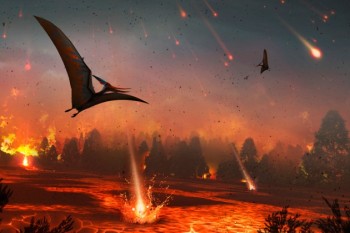Geologists to drill into heart of dinosaur-killing impact
April 12, 2016

Geophysicists are returning to Earth’s most famous cosmic bullseye. Around 7 April, from a drill-ship off the coast of Yucatán, Mexico, they will start to penetrate the 200-kilometre-wide Chicxulub crater, which formed 66 million years ago when an enormous asteroid smashed into the planet. The aftermath of the impact obliterated most life on Earth, including the dinosaurs.
The expedition is the first to directly probe one of Chicxulub’s most striking features — its ‘peak ring’, a circle of mountains that rises within the crater floor. Scientists have yet to fully explain how peak rings form, even though they are common in big impact craters across the Solar System.
Nature, March 31, 2016
BBC, April 5, 2016
Washington Post, April 6, 2016
Featuring: Sean Gulick, Research Professor, Institute for Geophysics, Jackson School of Geoscience
